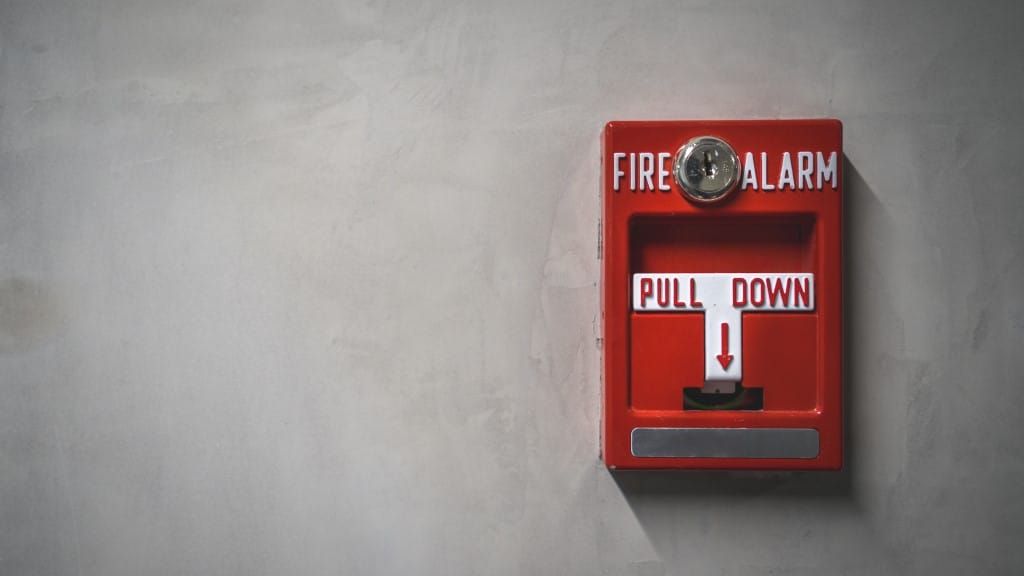IFSJ Exclusive: Working together to provide protection
- May 17, 2023
- 10:42 am


Iain Hoey
Share this content
Faheemuddin Mohammed, Specialist of Electrical Certification at Dubai Civil Defense’s Emirates Safety Lab talks passive and active fire protection
What is fire safety, and why is it a critical subject? Fire safety is the set of practices and procedures intended to reduce the life safety risk and property damage or destruction caused by fire.
Active and passive fire protection systems protect buildings and occupants from fire incidents. Both systems symbiotically play various roles in preventing, detecting, containing, limiting, and extinguishing fires.
Passive vs Active Protection Systems
Passive Fire Protection Systems are designed to control the spread of fire and smoke for a predefined period of time within the room (fire origin) in a building and to prevent it from spreading to adjacent areas (other compartments).
Active Fire Protection Systems are designed to detect, control, and extinguish fires which requires special stimulation or a command signal to operate. These systems are activated in the event of a fire, either automatically or manually, to help suppress the fire containing it until firefighting crews arrive at the incident and limit the damage.
Working together
Every building should have fire systems designed and installed. Considering a fire in the building, detectors are regarded by the general public as first defenders. These can be a smoke, heat, or combined detector, which, when activated, transfers the information (detection) of the fire incident location to the control panel. Suppose the fire is in its early stages before automatic detection. Anyone discovering the fire can trigger the system using the fire alarm manual call point/pull station. Immediately after fire detection, the fire alarm control panel (FACP) initiates actions per the facility’s designed “cause and effect matrix”.
During a fire emergency, the immediate activation of various systems and devices is essential to ensure the safety of the occupants and minimise damage to the building. One of the most critical components of a fire safety system is the Fire Alarm Control Panel (FACP), which is responsible for coordinating the activation of various systems and devices to facilitate safe and efficient evacuation.
The first system to be activated is the fire sounder and visual alarm devices, which provide an audible and visible warning to alert occupants to the emergency. If a voice evacuation system is installed in the building, the FACP will activate the system to start announcing the automatic evacuation plan, providing occupants with clear instructions on how to evacuate the building safely. If needed, a manual evacuation will be initiated.
The FACP will also initiate the emergency lighting system, illuminating the exit signage to guide occupants towards the direction of egress. Additionally, the smoke management system will be activated to contain or extract smoke from the building, with automatic extract fans being activated to extract the smoke.
In terms of the HVAC system, the FACP will switch from regular operation to emergency operation, including the air handling units (AHUs). If the fire strategy approach includes functionality for pressurisation, smoke management/extraction, etc., the HVAC will be turned off to provide proper ventilation and cut the airflow in designated areas of the building.
The Access Control System (ACS) will also be prompted to open the egress and release electric door locks for occupants’ easy evacuation. If required, fire doors will open or close to provide a suitable egress path or to compartmentalise the fire.
The sprinklers will be activated via self-contained detection (glass bulb or fusible link) for automatic fire extinguishing, while the fire and smoke dampers will be activated to stop the flow of smoke/fire to other areas.
At the same time, a series of fixed physical barriers, passive fire protection systems, are used to compartmentalise a building to withstand fire and smoke, hold fire in its original location, and prevent it from spreading to other parts of the building.
These systems will provide and reinstate the compartmentation and include various applications for fire and smoke barriers. In addition to the main structure of the building and building envelope such as the curtain wall, cladding systems and applied insulation to the outside of the building.
Awareness and quality of products/systems
It is generally understood that active fire systems detect and make sounds for evacuation; hence, it is a familiar system, and people have an idea about these. Building owners should know how vital fire systems and their maintenance are. The authorities and regulatory bodies should ensure these fire systems are mandated and provide guidance and governance for fire systems maintenance and ongoing testing throughout the building’s life cycle following the geographical areas’ requirements.
It is crucial to ensure that active and passive fire protection systems are installed and working together effectively to provide the best protection against fire risk.
All active and passive fire systems installed in a building should be tested by a recognised accredited laboratory and certified by an accredited certification body to ensure the quality of the product/system. Emirates Safety Laboratory (ESL) is accredited to per the ISO 17025 and ISO 17065 standards. It is a recognised laboratory and certification body that provides testing and certification to over 600 methods and standards for many fire products/systems.



